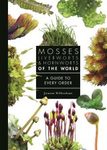![Chesapeake Invader Chesapeake Invader]()
Click to have a closer look
About this book
Contents
Customer reviews
Related titles
About this book
A reprint of a classical work in the Princeton Legacy Library, originally published in 1999
Thirty-five million years ago, a meteorite three miles wide and moving sixty times faster than a bullet slammed into the sea bed near what is now Chesapeake Bay. The impact, more powerful than the combined explosion of every nuclear bomb on Earth, blasted out a crater fifty miles wide and one mile deep. Shock waves radiated through the Earth for thousands of miles, shaking the foundations of the Appalachians, as gigantic waves and winds of white-hot debris transformed the eastern seaboard into a lifeless wasteland.
Chesapeake Invader is the story of this cataclysm, told by the man who discovered it happened. Wylie Poag, a senior scientist with the U.S. Geological Survey, explains when and why the catastrophe occurred, what destruction it caused, how scientists unearthed evidence of the impact, and how the meteorite's effects are felt even today. Poag begins by reviewing how scientists in the decades after World War II uncovered a series of seemingly inexplicable geological features along the Virginia coast. As he worked to interpret one of these puzzling findings in the 1980s in his own field of palaeontology, Poag began to suspect that the underlying explanation was the impact of a giant meteorite.
He guides us along the path that he and dozens of colleagues subsequently followed as – in true scientific tradition – they combined seemingly outrageous hypotheses, painstaking research, and equal parts good and bad luck as they worked toward the discovery of what turned out to be the largest impact crater in the U.S. We join Poag in the lab, on deep-sea drilling ships, on the road for clues in Virginia, and in heated debates about his findings. He introduces us in clear, accessible language to the science behind meteorite impacts, to life and death on Earth thirty-five million years ago, and to the ways in which the meteorite shaped the Chesapeake Bay area by, for example, determining the Bay's very location and creating the notoriously briny groundwater underneath Virginia. This is a compelling work of geological detective work and a paean to the joys and satisfactions of a life in science.
Contents
Preface ix
Acknowledgments xi
CHAPTER ONE Telltales 3
CHAPTER TWO Microfossil Magic 20
CHAPTER THREE Tektites 29
CHAPTER FOUR Toms Canyon 42
CHAPTER FIVE Super Tsunami 50
CHAPTER SIX Chesapeake Crater Revealed 53
CHAPTER SEVEN Proof in the Pudding 57
CHAPTER EIGHT A Perilous Path 67
CHAPTER NINE Mass Extinctions 80
CHAPTER TEN Eocene Environments 90
CHAPTER ELEVEN Sinking Sand 104
CHAPTER TWELVE Threatened Ground Waters 115
CHAPTER THIRTEEN Faulty Floor 123
CHAPTER FOURTEEN Seaward Explorer 127
CHAPTER FIFTEEN Buried Treasure 138
CHAPTER SIXTEEN Subterranean Waste 143
CHAPTER SEVENTEEN Chicken Little's Dilemma 147
Glossary 157
Suggestions for Further Reading 163
Recommended Sites on the World Wide Web 165
Index 167
Customer Reviews















































